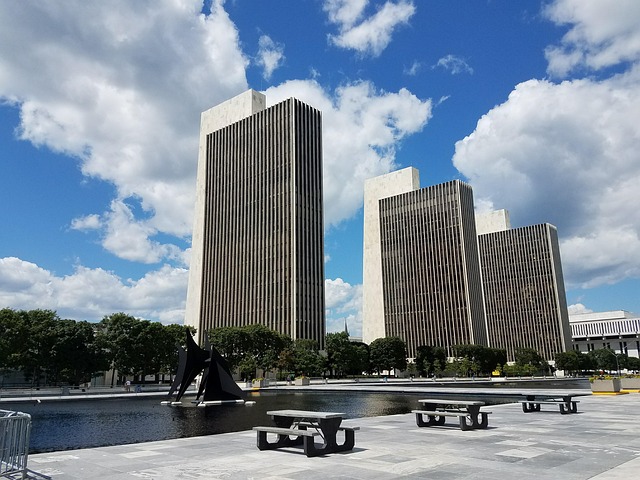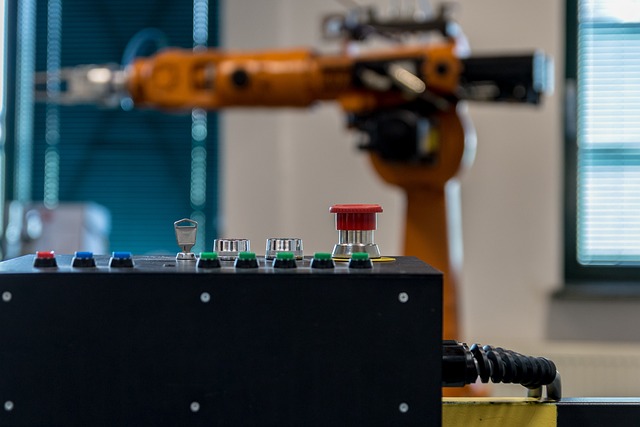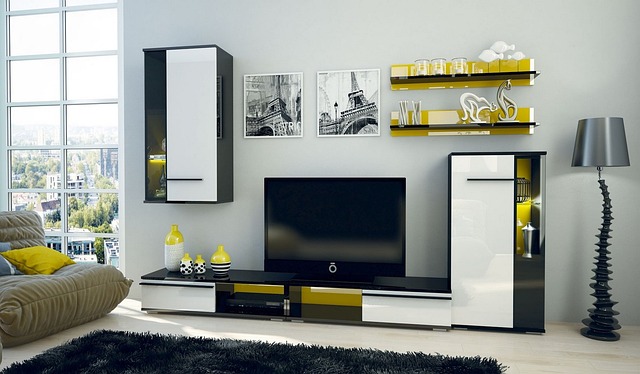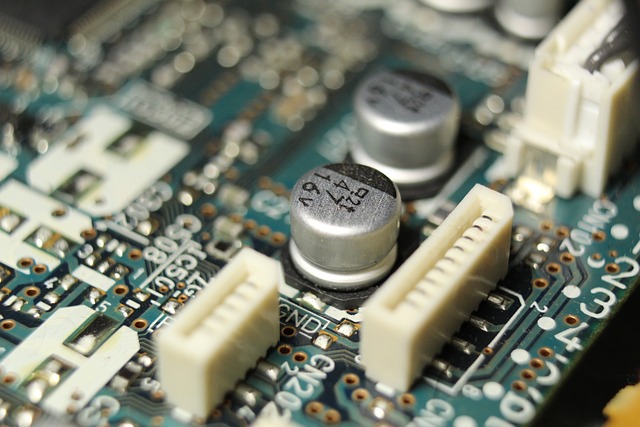In Albany, HVAC building automation leverages sensors, software, and algorithms for real-time climate control, reducing energy consumption by up to 30% and extending equipment lifespans. Smart thermostats learn occupant behavior, while integrated sensors optimize temperature based on occupancy and environmental factors. This technology makes buildings more sustainable, appealing to eco-conscious tenants and investors in Albany's competitive market, contributing to the city's commitment to green practices.
In the heart of Albany, the pursuit of energy efficiency is not just an environmental imperative but a strategic asset for real estate. This article explores how HVAC building automation is transforming urban landscapes, with a focus on Albany’s progress. From understanding the fundamentals of HVAC automation in local buildings to examining the financial benefits of smart thermostats and advanced control systems, we delve into the comprehensive impact this technology has on energy savings and long-term return on investment (ROI).
- Understanding HVAC Automation in Albany Buildings
- The Impact of Energy Efficiency on Albany's Real Estate
- Smart Thermostats: A Key Component of HVAC Building Automation
- Integrating Sensors for Optimal Temperatures and Savings
- Advanced Control Systems: Revolutionizing Albany's HVAC
- Long-Term Benefits and ROI of HVAC Automation Implementation
Understanding HVAC Automation in Albany Buildings

In Albany buildings, HVAC (Heating, Ventilation, and Air Conditioning) automation has emerged as a powerful tool for optimizing energy efficiency. This technology goes beyond basic controls, integrating sensors, software, and intelligent algorithms to adjust heating, cooling, and ventilation systems in real-time based on occupancy, temperature, and other environmental factors. By automating these processes, buildings can achieve significant energy savings while maintaining comfortable indoor environments.
HVAC building automation in Albany leverages both residential and commercial hvac automation technologies. Building management software integration plays a pivotal role, enabling centralized control and monitoring of multiple HVAC systems within a structure. Albany building automation consultants specialize in designing and implementing these solutions, tailoring them to meet the unique needs of different buildings. Through advanced features like scheduled programming, remote access, and predictive maintenance, these automated systems not only reduce energy consumption but also extend the lifespan of HVAC equipment.
The Impact of Energy Efficiency on Albany's Real Estate

In Albany, the pursuit of energy efficiency is not just a trend but a significant driver in the real estate market. The city’s buildings, from historic structures to modern complexes, are undergoing transformations powered by HVAC (Heating, Ventilation, and Air Conditioning) building automation. This smart approach to temperature control and indoor air quality management doesn’t just enhance comfort; it significantly reduces energy consumption. Property owners are realizing substantial savings through the implementation of smart thermostats and sensors Albany, which adjust temperatures dynamically based on occupancy and weather conditions.
Energy-saving HVAC retrofits in Albany are not only cost-effective but also contribute to a greener environment. These smart building automation services NY are enabling buildings to operate more efficiently, leading to reduced carbon footprints. As the city continues to embrace innovative solutions for energy conservation, the demand for energy-efficient real estate is expected to rise, attracting tenants and buyers who prioritize sustainability and operational costs savings.
Smart Thermostats: A Key Component of HVAC Building Automation

In the realm of HVAC building automation Albany, smart thermostats play a pivotal role. These advanced devices are more than just temperature controllers; they act as the brain of energy-efficient climate control solutions, optimizing heating and cooling systems for maximum efficiency. By learning occupants’ habits and adjusting settings accordingly, smart thermostats significantly reduce energy consumption without compromising comfort. This not only translates to substantial savings on utility bills but also contributes to a greener environment, making them an indispensable component in any modern building.
For Albany’s green building automation consultants, integrating smart thermostats into HVAC systems is a strategic move. Building energy solutions tailored to the region’s needs demand sophisticated technologies that can adapt to varying climate conditions and occupancy patterns. Through automated adjustments, these thermostats ensure optimal indoor comfort while minimizing waste, aligning with the city’s commitment to sustainable practices. Thus, for buildings in Albany, adopting smart thermostat technology is not just a trend but a necessary step towards a more energy-efficient future.
Integrating Sensors for Optimal Temperatures and Savings

Integrating sensors into HVAC building automation systems in Albany offers significant advantages for optimizing temperature control and energy savings. These smart devices play a crucial role in adjusting the indoor climate precisely to current occupancy and environmental conditions. By continuously monitoring factors like room temperature, humidity, and light levels, sensors enable local HVAC automation experts to fine-tune the system’s performance. This precision results in more efficient climate control, as the system only works when needed, reducing energy waste.
For instance, motion detectors can trigger heating or cooling based on occupancy, ensuring sustainable HVAC design and implementation. During unoccupied periods, sensors can automatically adjust settings to lower energy consumption. Additionally, advanced algorithms using sensor data can predict user preferences, enhancing comfort while minimizing energy-efficient climate control solutions. This integration is a game-changer in the pursuit of greener buildings, allowing for significant savings without compromising on comfort or performance.
Advanced Control Systems: Revolutionizing Albany's HVAC

In the competitive and ever-evolving landscape of Albany’s commercial real estate, advanced control systems are emerging as a game-changer for HVAC (Heating, Ventilation, and Air Conditioning) building automation. These innovative technologies offer more than just comfort; they’re revolutionizing energy efficiency in Albany’s buildings, turning them into models of sustainability. By implementing sophisticated algorithms and sensors, these systems can anticipate and respond to changing indoor conditions, optimizing temperature, humidity, and air quality. This proactive approach not only enhances the working environment but also drives significant energy savings through precise control and reduced idling.
In light of the above, the shift towards energy-saving HVAC retrofits in Albany is not just a trend, but a strategic move. Advanced HVAC technologies for offices in NY state are designed to automate building processes, ensuring they operate at peak performance while minimizing waste. This not only reduces operational costs but also contributes to a greener environment, making Albany’s buildings more attractive to eco-conscious tenants and investors alike.
Long-Term Benefits and ROI of HVAC Automation Implementation

Implementing HVAC (Heating, Ventilation, and Air Conditioning) building automation in Albany offers significant long-term benefits for businesses and property owners. Over time, this technology pays for itself through reduced energy consumption and lower operating costs. By automating building processes in NY state, you can expect improved efficiency as the system adjusts temperatures and air quality based on real-time occupancy and weather data. This ensures that your HVAC system runs only when needed, leading to substantial energy savings.
As an intelligent building controls expert in Albany would attest, networked building automation systems are game changers. They provide precise control over environmental factors, enhancing comfort for occupants while minimizing waste. The return on investment (ROI) is remarkable, with studies showing that HVAC automation can reduce energy costs by up to 30%. This not only benefits the bottom line but also contributes to a more sustainable and environmentally friendly approach to building management in the region.
HVAC building automation in Albany is not just a trend, but a necessary step towards a more energy-efficient future. By implementing advanced control systems, smart thermostats, and temperature sensors, buildings across the city can significantly reduce energy consumption and operating costs. The long-term benefits of HVAC automation are undeniable, offering higher return on investment (ROI) while contributing to Albany’s overall sustainability goals. This innovative approach to heating, ventilation, and air conditioning not only enhances comfort for building occupants but also positions Albany as a leader in green technology adoption.














